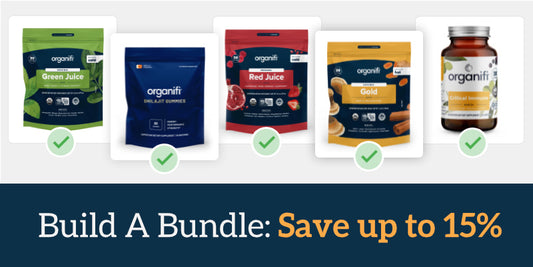As another year comes to a close and a new one is on the horizon, it’s only natural to reflect, while maybe also pondering the goals and visions you have for the upcoming chapter. Chances are that those goals will likely concern your health and wellbeing, as research shows that over 50% of resolutions are health and fitness related. When it comes to those New Year resolutions, only a mere 8% of them are achieved. While this might seem discouraging, this blog will help to support your success by transforming your resolutions into rituals.
Let’s start understanding the difference between routines, rituals, and resolutions.
At first glance, they might appear interchangeable. However, their differences lie in our mindset behind the action. This difference is critical, as it could potentially be the reason behind accomplishing your goal or not.
With a routine, you take the guesswork out of the equation. Routines are usually simple habits that need to get done to keep your life moving forward. Think of habits like making your bed, putting away the dishes, or brushing your teeth. They don’t require a lot of focus or attention to be completed.
A resolution is defined as a “firm decision to do or not to do something.” A resolution can be transformed into either a routine or a ritual, but it might be in your benefit to turn your resolutions into rituals.
Because rituals are more meaningful practices, with the added element of mindfulness. You don’t necessarily need a ritual to keep your life moving forward, but it certainly helps to have them. Rituals invite joy and presence, which certainly supports a healthy, sustainable lifestyle.

You can see that all three are a part of the same intention - to support your growth and wellbeing. As you set your resolutions for the new year, we thought it might be important to share simple ways you might turn them into rituals. Routines, as mentioned, are great for the habits that make life easier, but we believe that for a lifestyle transformation to occur, incorporating joy and a ritualistic perspective is a must.
1. Make exercise fun.
Exercising more is among the top resolutions and for good reason. It boosts our mood, increases our energy, and supports a healthy heart. There commonly lies this preconceived notion that exercise has to be grueling and intense for it to count, but that’s just not true. Consider what forms of movement that you genuinely enjoy (even if they don’t involve a gym.) It will be challenging to consistently wake up an hour earlier for a run or fitness class that doesn’t bring you joy. Allow yourself to explore new forms of movement until you find one that lights you up. This could be dancing, walking, or jumping on a trampoline! You could also check out obé, an online platform with a variety of over 6000 live and pre-recorded fitness classes that you can access from the comfort of your own home!
2. Keep the pleasure factor in your diet.
If one of your resolutions is to eat a healthier diet, you’re in the right place ;) The biggest misconception with eating healthier is that nutrient-dense foods aren’t the most appetizing...but we know that isn’t true. Eating is intended to be a pleasurable experience. Fad diets often fail because they lack a pleasure factor, causing them to not be sustainable in the long term.
This year, bypass the trending diets and brainstorm the ways you can transform your favorite dishes into nutrient-dense meals. You might consider checking out our previous blog posts like this one for delicious desserts using superfoods and adaptogens. You can even create a ritualistic practice in the evening, sipping on a warm cup of gold for a healthy, after-dinner sweet treat and a moment of reflection to cap your day.
3. Sit down and enjoy your meals.
Speaking of eating healthier...what you eat is important, but the energy and setting around your mealtimes is arguably just as important. When we’re on-the-go or eating rushed between life’s demands, this can interfere with our ability to connect with our food and bodies. Several studies have shown that our metabolism is impacted by our mental state, so sitting down and enjoying your food is to your benefit!
Aim to gift yourself at least 15 minutes at each meal. This will better allow your body to shift into a parasympathetic state (rest & digest), so that you can promote optimal digestion. If you're short on time (it happens!), try out complete protein in your next breakfast smoothie. It’s packed with 20 grams of protein, superfoods, organic vitamins and minerals, making it the perfect way to start your morning ritual without requiring a lot of time.
4. Visualize your future.
Your mind and body are undoubtedly connected, but have you ever thought your way into success? Just by dedicating time to *daydream* about your desired outcome? Well, you can! Visualization is a technique that is used by many athletes, CEOs, and other high-performing individuals. While it might seem “too good to be true” to simply transport yourself into your desired outcome, there’s ample research that’s proven that mental practices are just as important as the physical practices themselves.
This means that from the comfort of your bed, you can increase positive outcomes to your resolutions and new rituals in your life. We recommend dedicating 15 minutes everyday to tap into the emotions, thoughts, and images that would be present at the completion of your resolution. You can do this on your own or try out a practice like this one.
5. Connect to your breath for health & happiness.
Our breath is connected to our prana. Prana, a sanskrit word, translates to our “vital life force.” In the physical sense, we need our breath to sustain life, but our breath is also reflective of our spiritual health as well. Our spiritual health plays a critical role in our physical health, one cannot exist without the other. We can work to increase our prana by connecting to our breath through intentional breathing practices. Breathwork can support stress relief, increased immunity, reduction in inflammation, and an increase in your mood.
Just like the physical practice of yoga, there are many styles of breathwork, from more intense practices to soothing ones. If you’re ready to increase your mind-body connection, start with this practice on the organifi Youtube channel. After any breathwork practice, it’s important to rehydrate and reset. Follow up your practice with a glass of green juice to promote hydration, a healthy reset, and stress support with an added clinical dose of ashwagandha.
Be sure to check out our seasonal kit 'resolutions to rituals' to support your transition into a new year. Curated especially for your lifestyle transformation and turning resolutions into rituals that are part of a lasting routine.
About the Author: Nia Carrillo is a Mind-Body Nutritionist and Energy Healer specializing in helping individuals heal cycles with food, their body, and emotions. Nia believes in a whole-being approach, bridging the gap between science and the metaphysical for physical and spiritual transformation. She received her Master's in Nutrition in 2018 and is also trained in many modalities such as Hypnotherapy, MBSR (mind-body-spirit release) Technique, Emotional Clearing (MER), NLP, Reiki, and Breathwork. Nia is currently based in San Diego, with her husband and two dogs, Boots and Douglas.




